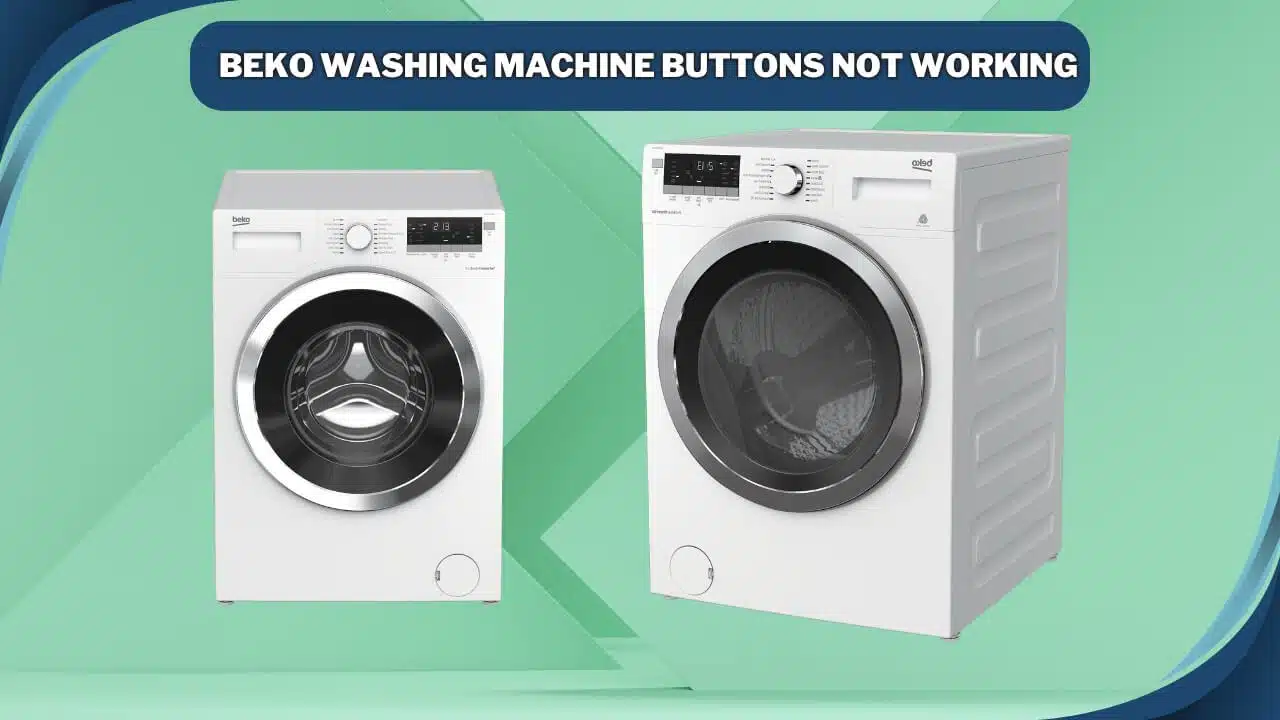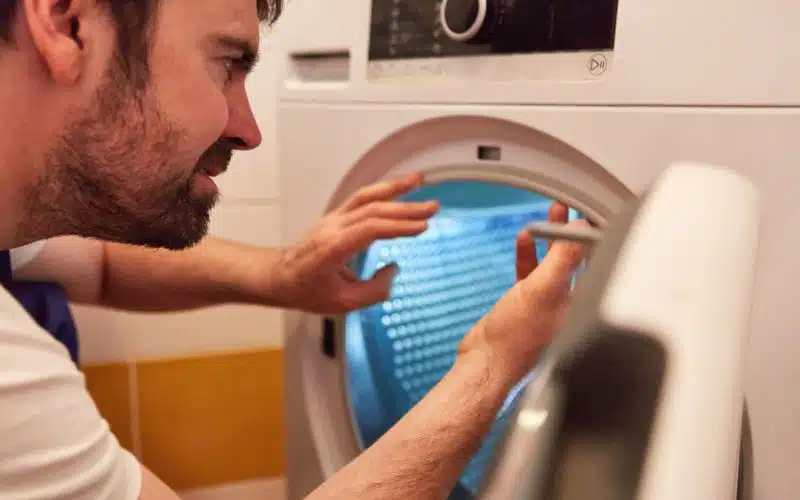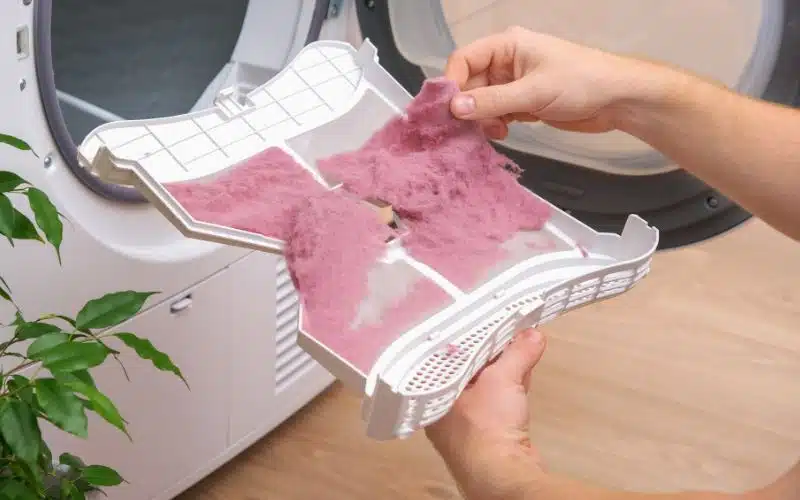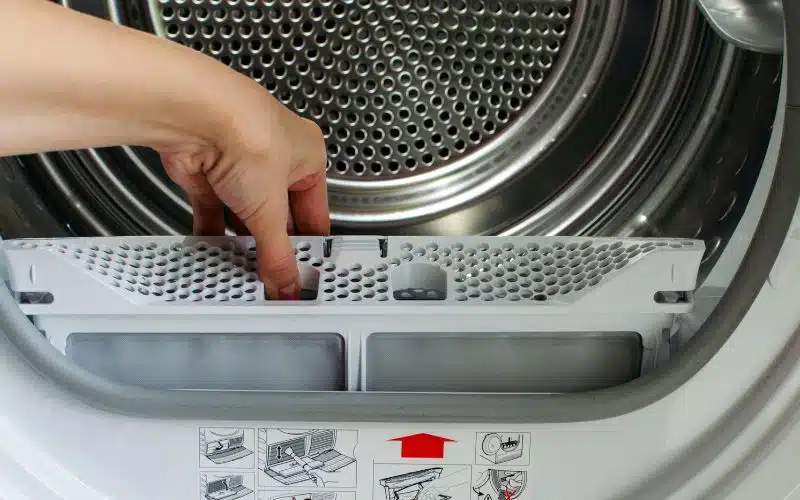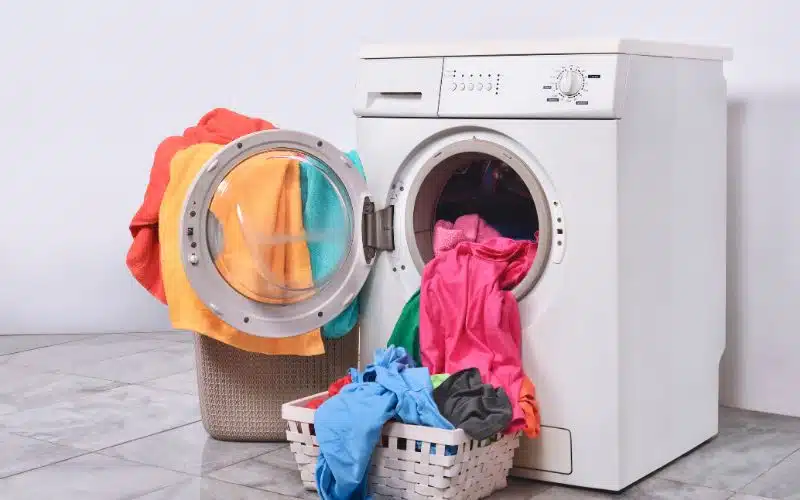Knowing the ‘how,’ ‘why,’ and general working operation of your washing machine drain can be so beneficial.
It gives you the added advantage of having prior knowledge about minor issues and fixing them.
It also saves you the stress of always calling a technician. But, first, let’s see why washing machine drains are lifted above ground level.
Technicians place washing machine drains some meters above the usual level to avoid situations of siphoning. Siphoning scenarios occur when water is constantly draining yet not pumping out. Raising the washing machine hose above the standard water level is a precautionary measure to prevent drained water from entering the washer.
How High Should A Washing Machine Drain Pipe Be?
Ideally, they should be higher than the highest water level in the washer. For example, front-load washers have their drain pipes at an inch of at least 24 inches from the floor level.
Top load washers have theirs at least 30 inches from the floor level.
This altitude ensures that the washer drain hose functions correctly. You could likewise go through your instruction manual.
Note that either backflow or overflow can occur if you place your drain pipe extremely low or high.
The most significant height of your drainpipe is dependent on the pump’s capability to pump to a greater size.
It’s also dependent on how far the drained water from the pumping machine will flow.
Of course, you could merely hold the drainpipe at any desired altitude and try it yourself.
You’ll notice that the drained water will flow slower at greater altitudes and faster at lower altitudes. This is because the pump will have less capability to greater heights.
Greater heights or altitudes force pump motors to work harder than usual.
And if you take the drain pipes to extreme heights, the pump machine will heat up and eventually develop faults.
Be aware that water in the washing hose machine can flow back into the washer when the pump stops, though you may not notice.
Whether you see it or not depends on your washing machine’s capacity and plumbing.
The length and diameter of the washer hose drain can affect the returning water.
A non-returning valve in the drain hose line might help; the water will remain in the hose unless the non-returning valve is not 100% efficient.
How Long Should The Drain Hose Be On A Washing Machine?
It’s true that several lengths for different washing machine drain hoses exist, though they’re usually not too long.
They should be about 4-6 feet. 1-1¼ is the comprehensive range of drain hose diameters. I prefer it to be pretty much as short as could be expected.
Anyway, on many washing machines, you will need the washer’s machine hose to be high before it goes into the standpipe or waste removal.
The reason for that height is so that siphoning doesn’t occur, and water from the sink does not stream back into the washer.
Attempt to take it excessively far, and the drain pump will be under a heavy burden. It will not pump, or even if it does, it won’t be so effective.
It might also not keep going as long as it ought to. Nonetheless, drain hoses can be as long as possible, provided they are empty below the drum height in the washer.
Then, it should be able to reach the standpipe.
For a perfect drain hose length, consider a few things.
#1. The Standpipe Length
When your drain pipe has a high altitude, the hose length will increase. If the height of the standpipe is low, the hose length will decrease.
The hose length should be able to reach your standpipe length.
#2. The Standpipe’s Distance From The Washing Machine
If you place your washer at a long distance from the standpipe, you’ll have to use a drain that is also longer.
Note that one of the reasons for backflow is a drain hose that is long and fitted horizontally. Backflow carries dirty water into your washer, and that can cause other issues.
How Do I Lower My Washing Machine Drain Hose?
Merely restrict the Washing Machine Drain hose. The restriction will reduce or retard the water flow rate to the capacity of your drain.
In addition, it will stop the drain hose from possible overflow.
Be sure not to limit the washer machine drain too much. If you do so, it will prematurely advance to the subsequent cycle.
You could use anything for the restriction though I suggest a copper filling. It would fit into the hose.
Place the filling in the machine drain hose precisely, at the point where the hose has a connection to the backside of the washer.
After that, use a hose clamp to hold it firmly.
What Causes Washing Machine Drain To Overflow?
I can assure you that there are several reasons why your washing machine drain will not overflow. Clogged drain pipes are the most common.
In addition, various materials like dust, waste build-up, and hair-like materials from textiles gradually develop inside the tube over long periods.
This build-up can prevent water from completely draining. Inconsistent cleaning of your machine hose can likewise cause overflow.
This cause of overspill is somewhat similar to the first one I just mentioned, which is clogged drain pipes.
The fact is, if you regularly clean your washing machine hose and drainpipes, it’ll help you. You’ll hardly, if not, experience overflow for reasons of clogged drain pipes.
Another reason why your washer drain will spill over is a low water supply.
Many kinds of issues can result from the amount of water pressure in your washer, and trust me, a washer drain overflowing is not an exception.
If the water pressure that flows through your pipe is insufficient, the water channel valve won’t get any sign to shut down the progression of water.
As a guideline, the water tension from your civil lines to your clothes washer should be working effectively at a minimum of 20 PSI(Pounds per Square Inch) to set off the water channel valve.
This issue of low water pressure is common in old homes where plumbing wasn’t designed to suit large modern appliances.
Note that aging and leaking pipes could likewise be the reason for insufficient water pressure in old homes.
Furthermore, always try to inspect the washing machine’s drain hose connections.
Also, ensure to check if there are any cracks along the pipe. If there are, replace them as soon as possible!
Other possible reasons your washer machine drain could overflow include; old or aging pipes, an absent p-trap, and twisted discharge hoses.
You can prevent cases of drain overflow by utilizing a wired network build-up catcher. It will get all of the build-ups in the washer, so it doesn’t obstruct your drain.
This solution doesn’t completely solve your problem though it’s a good solution.
You could likewise use enzymes frequently to get rid of the soap scum. Surely it helps, provided you do it routinely.
Conclusion
It’s always good you know why your drains need to be high. It’s simply to prevent siphoning.
The washtub water would drain out when the drains are lower than the water level in the washer.
Try your best to make your drain hose as short as possible though not too short. The washing machine hose can be lengthy though it depends on your situation.
It’s also good you follow the instructions in your user manual guide. Finally, be sure to regularly clean your drain hose to avoid clogged drain hose issues that cause overflow.
